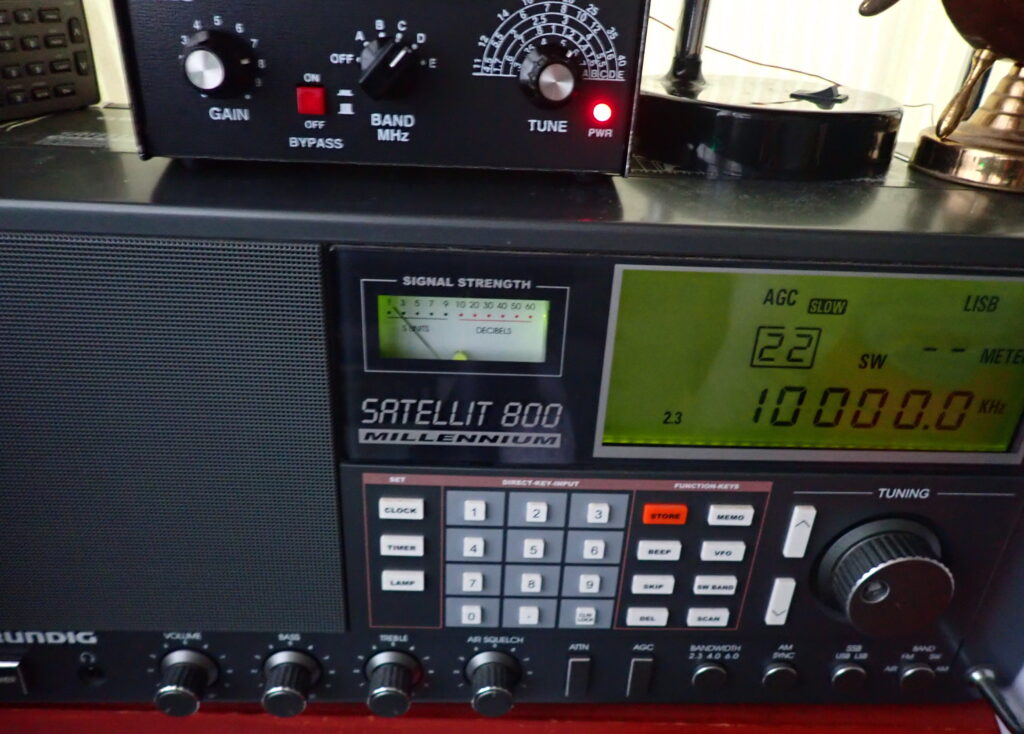Radio Waves: Stories Making Waves in the World of Radio
Welcome to the SWLing Post’s Radio Waves, a collection of links to interesting stories making waves in the world of radio. Enjoy!
The unlikely story of an American ham radio amateur and her conversations with cosmonauts in space (PRI’s The World)
In the 1980s, Margaret Iaquinto was an amateur ham radio operator who communicated with Russian cosmonauts in space. She talked to them for over a year. Iaquinto died in 2014. But her son Ben Iaquinto remembers the friendships she developed with the cosmonauts. Marco Werman speaks to Ben Iaquinto about his mom’s hobby and the conversations she had with these Russian cosmonauts.
Radio Stations Shut Or Power Down At Night, Because Of The Laws Of Physics (IFL Science)
If you’re a radio fan, or have merely been stuck in a car as day transitions into night, you may have noticed that you don’t get quite as clear signal in the hours of darkness.
Before you assume that it’s a plot by reverse vampires (possibly in conjunction with the saucer people) in order to make radio listeners go to bed, you should know that it’s actually the result of a requirement by the Federal Communications Commission (FCC) to power down or turn off at night, and the FCC in turn are required to do this by the laws of physics.
It all has to do with wavelengths and the ionosphere. During the daytime, AM signals primarily propagate close to the ground (known as ground wave propagation) and follow the curves of the Earth. In the daylight hours, AM signals sent by radio stations can cover around 162 kilometers (100 miles) before you will struggle to hear the signal.
As good as this is, at night the ability of long waves to propagate large distances becomes a problem, thanks to the ionosphere. Between 80 and 600 kilometers (50-373 miles) above the Earth, particles in the Earth’s atmosphere are bombarded with Extreme Ultraviolet (EUV) and x-ray solar radiation, ionizing them as they do so. The ionosphere grows and shrinks (on your side of the planet) depending on the time of day.
At night, the layer reflects AM radio signals (known as “skywave” propagation) to a much greater degree than during the day, allowing the signal to be carried for hundreds of miles further than during the day. While this may sound like good news, it is what’s known as a “pain in the butt” for any communication regulators out there, or people who want to listen to anything other than an indiscernible mess of static.
“Because of this change in signal propagation from daytime to nighttime, if every AM station kept its daytime operating power at night, massive interference would result,” the FCC explains on their website. [Continue reading…]
Islanders’ interest in amateur radio surges because of COVID-19 and Fiona (CBC)
‘The sky’s the limit. There’s just so many different things that you can learn’
The amateur radio community on P.E.I. is growing, thanks in part to the COVID-19 pandemic and post-tropical storm Fiona.
Stratford resident Brent Taylor has been a ham radio operator for 38 years, in New Brunswick and P.E.I. He goes by the call sign VY2HF.
“It’s been absolutely fantastic. We have been so thrilled with the number of people that have come forward, and now that we’re getting them on the air,” Taylor said.
“Probably because of COVID, and maybe because of Fiona, there’s been a more of an interest, I think, in people wanting to be able to maintain their connections with each other, even from their own homes.”
Taylor said a dozen people started the 12-week training program in the fall, and eight passed their exams and are now licensed operators.
“The most diverse I’ve ever seen. And I’ve been teaching off and on this course for 35-plus years. To see the number of women in the course, for one thing, is just tremendous,” Taylor said.
“Also, cultural diversity and a wide range of ages from as young as 12 years old.” [Continue reading…]
No more airplane mode? EU to allow calls on flights (BBC)
Airline passengers in the European Union (EU) will soon be able to use their phones to full effect in the sky.
The European Commission ruled airlines can provide 5G technology on board planes, alongside slower mobile data.
This could mean flyers will no longer be required to put their phone on airplane mode – though the specifics of how it will be implemented are unclear.
The deadline for member states to make the 5G frequency bands available for planes is 30 June 2023.
This will mean people can use all their phone’s features mid-flight – enabling calls as well as data-heavy apps that stream music and video.
Thierry Breton, EU Commissioner for the Internal Market, said the plan would “enable innovative services for people” and help European companies grow.
“The sky is no longer a limit when it comes to possibilities offered by super-fast, high-capacity connectivity,” he said. [Continue reading…]
Do you enjoy the SWLing Post?
Please consider supporting us via Patreon or our Coffee Fund!
Your support makes articles like this one possible. Thank you!









